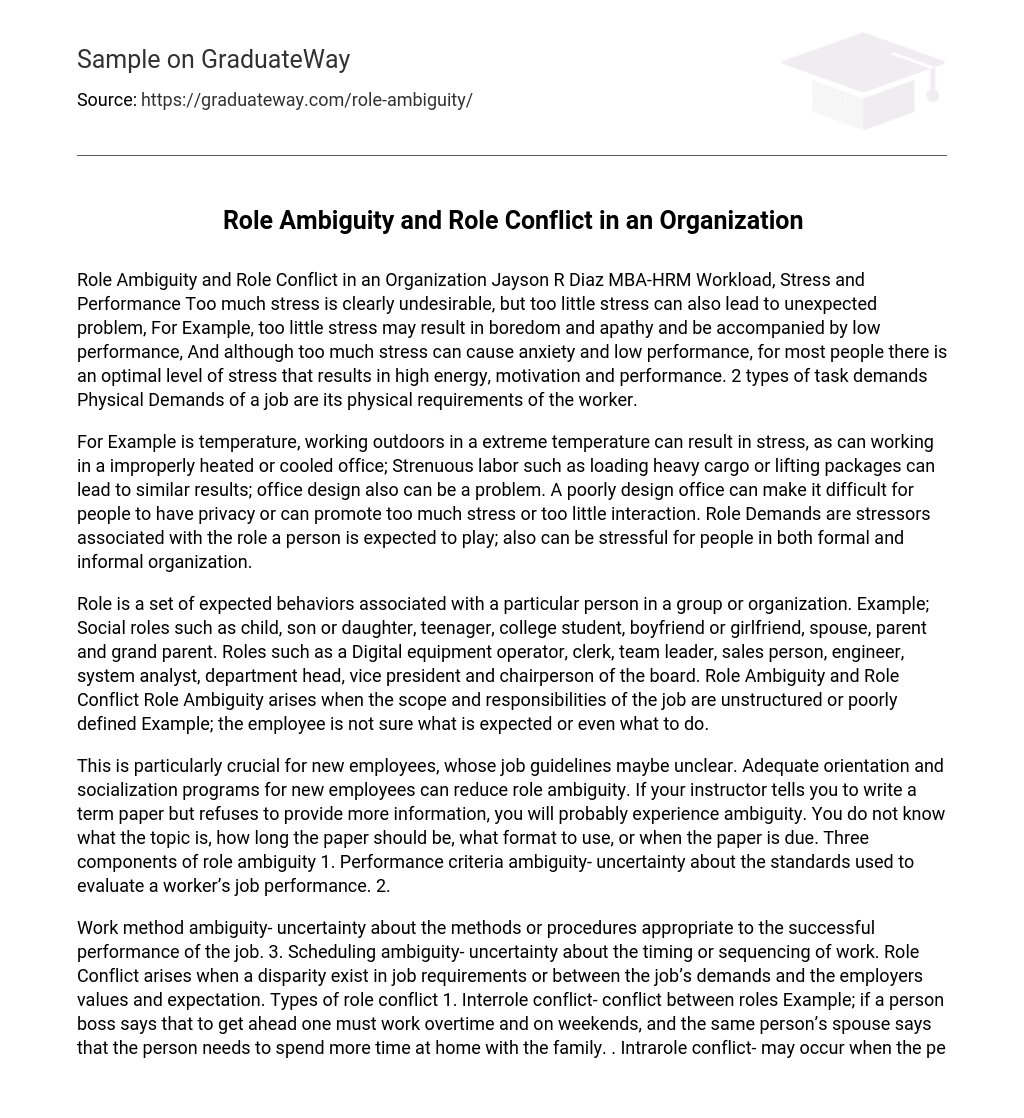Excessive stress is undesirable, but insufficient stress can also cause unexpected issues. For instance, insufficient stress can lead to boredom and apathy, resulting in poor performance. Conversely, excessive stress can cause anxiety and low performance. However, most individuals experience an optimal level of stress that yields high energy, motivation, and performance. There are two types of task demands: physical demands refer to the physical requirements of a job for the worker.
For example, temperature is a factor that can cause stress, whether it’s from working outdoors in extreme temperatures or working in an office that is not properly heated or cooled. Strenuous physical labor, such as loading heavy cargo or lifting packages, can also lead to stress. Additionally, the design of an office can contribute to stress levels, as a poorly designed office can hinder privacy or create excessive stress or insufficient interaction. Another source of stress is role demands, which are associated with the expectations placed on individuals in both formal and informal organizations.
A role is a collection of anticipated behaviors connected with a specific individual in a group or organization. For instance, social roles consist of child, son or daughter, teenager, college student, boyfriend or girlfriend, spouse, parent, and grandparent. Additionally, there are roles like digital equipment operator, clerk, team leader, salesperson, engineer, system analyst, department head, vice president, and chairperson of the board. Role ambiguity and role conflict can occur when the extent and responsibilities of a job lack structure or clear definition. This could result in employees being uncertain about expectations or tasks.
The need for clear job guidelines is especially important for new employees. Having proper orientation and socialization programs can help alleviate role ambiguity. If your instructor gives you the task of writing a term paper but doesn’t provide additional details, you may encounter ambiguity. You won’t know the topic, length, format, or deadline of the paper. Role ambiguity consists of three components.
- Performance criteria ambiguity- uncertainty about the standards used to evaluate a worker’s job performance.
- Work method ambiguity- uncertainty about the methods or procedures appropriate to the successful performance of the job.
- Scheduling ambiguity- uncertainty about the timing or sequencing of work.
Role Conflict occurs when there is a disparity between job requirements, or when there is a conflict between the job’s demands and the employer’s values and expectations. There are different types of role conflict.
- Interrole conflict- conflict between roles Example; if a person boss says that to get ahead one must work overtime and on weekends, and the same person’s spouse says that the person needs to spend more time at home with the family.
- Intrarole conflict- may occur when the person gets conflicting demand from different sources within the context of the same role. Example; a manager’s boss may tell her that she needs to put more pressures on subordinates to follow new work rules. At the same time, her subordinates may indicate that they expect her to get the rules changed.
- Intrasender conflict- occurs when a single source sends but clear but contradictory messages Example; if the boss says that there can be no more overtime for the next month but after lunch tells someone to work late that same time evening.
- Person-role conflict- results from a discrepancy between the role requirements and the individual’s personal values and needs.
There are four primary causes of interpersonal conflict.
- Personal differences. Everyone has a unique background because of his or her upbringing, cultural and family traditions, and socialization processes.
- Information deficiencies- It may be that the two people in conflict are using different information or that one or both have misinformation.
- Role incompatibility- this type of interpersonal conflict draws from both intraindividual conflict and intergroup conflict. Example; the production and sales manager have interdependent function: one supports the other.
- Environmental stress- These types of conflicts can be amplified by a stressful environment. In environment characterized by scarce or shrinking resources, downsizing, competitive pressures, or high degrees of uncertainty.
Response categories from two individuals
- Forcing (assertive, uncooperative)
- Accommodating (unassertive, cooperative)
- Avoiding (uncooperative, unassertive)
- Compromising (between assertiveness and cooperativeness)
- Collaborating (cooperative, assertive)
Reference
- Psychology and work today ninth edition; Pearson international edition, Duane Schultz and Sydney ellen, 2006
- Organizational Behavior ninth edition, International edition, McGraw-Hill, Fred Luthans, 2002
- Organizational Behavior seventh edition, Managing People and organization, Moorhead and Griffin, 2004





